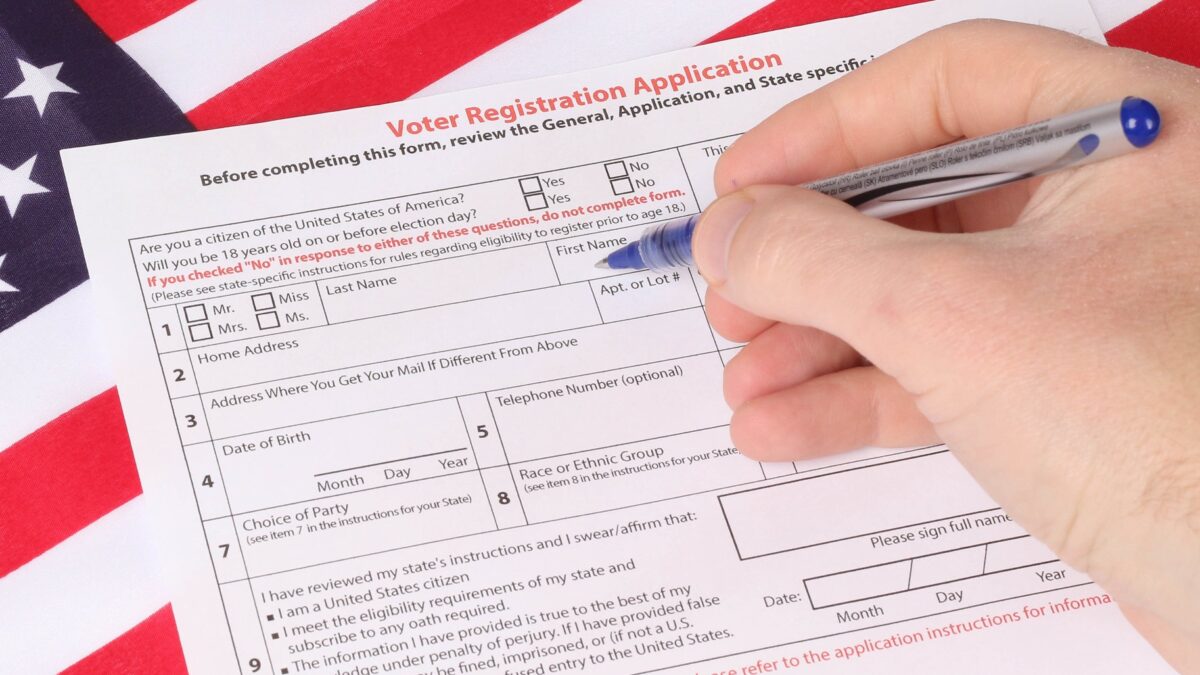Leaked Messages From UAW Official Reveal a Big Cause of Unions’ Decline
By: Rachel Greszler / September 28, 2023
Read more at https://www.dailysignal.com/2023/09/28/leaked-messages-uaw-official-reveal-big-cause-unions-decline/

A leaked UAW official’s message reveals the union’s strategy for wounding and weakening U.S. companies—the very companies its members rely on for their paychecks. Pictured: Jesse Ramirez, president of the United Auto Workers Local 230, speaks on a picket line during a strike outside a Stellantis distribution center in Ontario, California, on Sept. 26, 2023. (Photo: Patrick T. Fallon, AFP/Getty Images)
“If we can keep them wounded for months, they don’t know what to do … this is recurring reputations damage and operation chaos.”
That leaked statement, first reported by The Detroit News, is not a military tactic nor a hostile takeover plan. Rather, it’s a strategy for wounding and weakening American companies, with collateral damage that includes the American economy. And it’s the strategy—expressed in a private group chat on X (formerly Twitter) by United Auto Workers communications director Jonah Furman—of an organization whose foremost mission statement is to “improve and protect” the compensation and work environment of UAW members.
The utter disconnect between the UAW’s strategy of wounding, damaging, and inflicting chaos on the companies upon which its members’ jobs and compensation prospects depend is astounding. Big Labor’s increasingly distorted understanding of unions’ role in America—and of free enterprise and democracy—are a cause of their decline. At their heyday, unions represented about 35% of workers in the U.S. Today, they represent 10% of workers, and only 6% of private sector workers.
Workers realize that the viability of their jobs and the compensation they receive are interwoven with the success of their employers. In science, this is referred to as a symbiotic relationship: two groups working together toward a common goal.
(There will, of course, always be some bad employers who take advantage of workers or deny them a voice in the workplace. And when that happens, the best remedies are for workers to either seek better job opportunities or for those who want to band together collectively to do so.)
But despite surveys that show that teamwork and good relationships with managers are primary components of employees’ engagement and satisfaction, Big Labor seems intent on convincing workers that they must be at war with their employers.
When critiquing the suggestion that unions would do better to abandon their focus on politics and adversarial tactics, two Teamsters union attorneys essentially admitted that creating conflict is how they survive, saying, “It is no secret that such a ‘non-adversarial’ approach would gravely weaken organized labor.” That’s where unions have gone astray, thinking that “it’s us or them.”
Even in 1950, when the only cars Americans could buy were those made by the Big Three automakers, that flawed interpretation of labor unions’ roles was short-sighted. Yes, the UAW was able to drive up compensation above market wages to the benefit of its members, but the result of higher car prices meant fewer families could afford cars and, thus, fewer cars were produced and fewer workers were needed to produce them.
Now, in the globally competitive 21st century, unions inflicting damage and chaos are at odds with unions’ short- and long-term goals. How can companies whose reputations have been crippled and who’ve suffered financial losses somehow pay workers 40% more for 20% less work? That’s like eliminating 11 players from the Arizona Cardinals roster, not allowing players to access to their practice stadium, and expecting them to win the Super Bowl.
Understandably, the Big Three automakers are frustrated.
A Stellantis spokesperson said that the reported comments “are incredibly disturbing and strongly indicate that the UAW’s approach to these talks is not in the best interest of the workforce. We are disappointed that it appears our employees are being used as pawns in an agenda that is not intended to meet their needs.”
GM said that it’s “now clear that the UAW leadership has always intended to cause months-long disruption, regardless of the harm it causes to its members and their communities.” GM also said this “calls into question who is actually in charge of UAW strategy and shows a callous disregard for the seriousness of what is at stake. UAW leadership needs to put the interests of its members and the country over their own ideological and personal agendas.”
And a Ford spokesperson said, “It’s disappointing, to say the least, given what is at stake for our employees, the companies, and this region,” and noted, “For our part, we will continue to work day and night, bargaining in good faith, to reach an agreement that rewards our workforce and allows Ford to invest in a vibrant and growing future.”
If union officials actually want to protect UAW jobs and improve workers’ compensation, then they have to want the Big Three American automakers to succeed and to grow. Considering that U.S. auto production is less than half of what it was two decades ago, success is likely going to require that the UAW work alongside—rather than against—U.S. automakers to help them become more competitive.
To the extent that involves lobbying policymakers, the focus should be on getting the government out of the business of picking winners and losers by its subsidizing of more expensive electric vehicles that require 40% less labor while also seeking to ban gas-powered vehicles that Americans still overwhelmingly desire.
And if unions across America want to increase their membership, they should appeal directly to workers by offering things they value instead of using their dues to get politicians to go against their interests by doing things like attacking secret ballot union elections, restricting employers’ ability to share important information with workers before union elections, and establishing a pathway to force an employer to bargain with a union even if workers don’t want to be represented by it.




You must be logged in to post a comment.